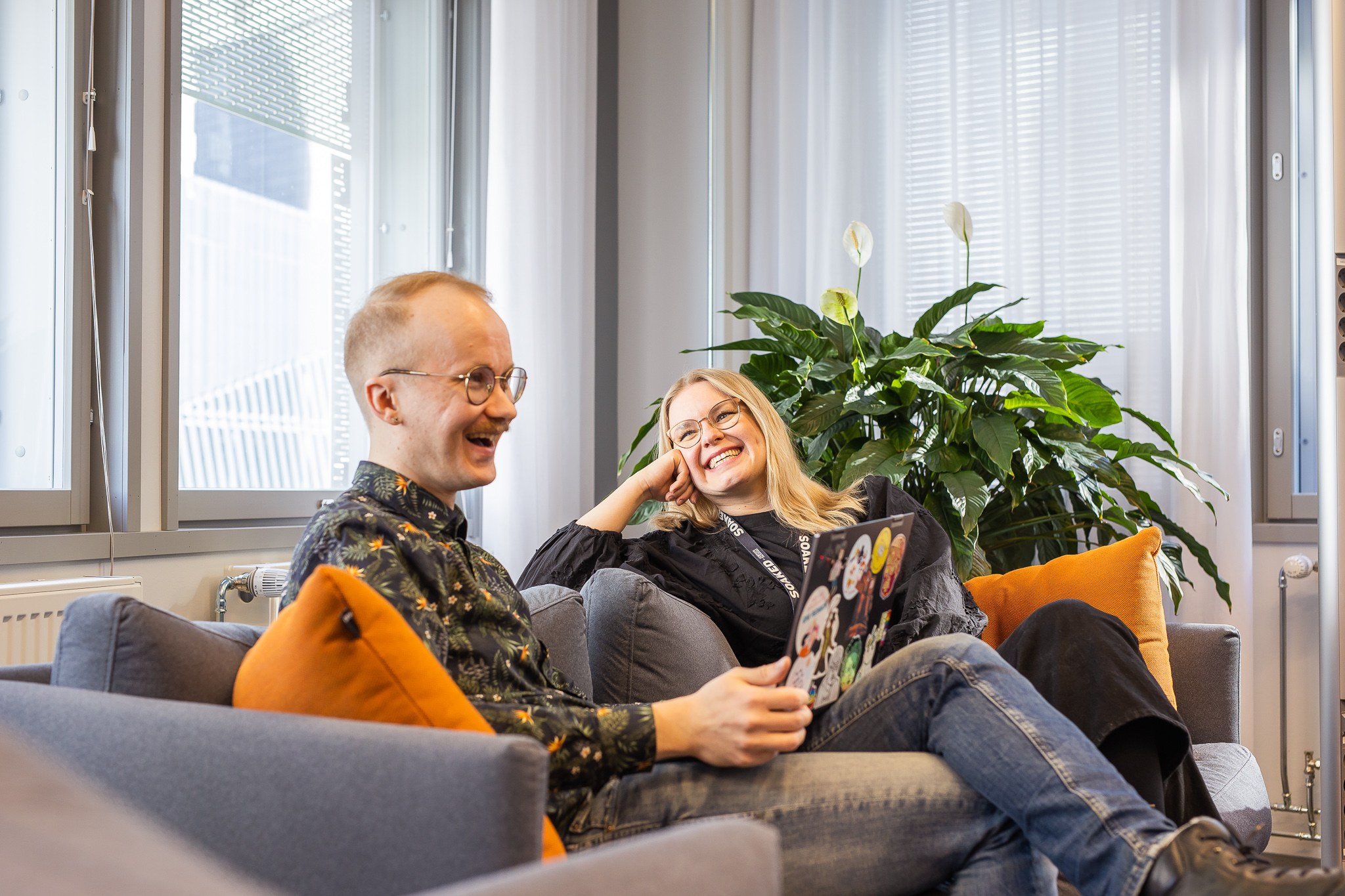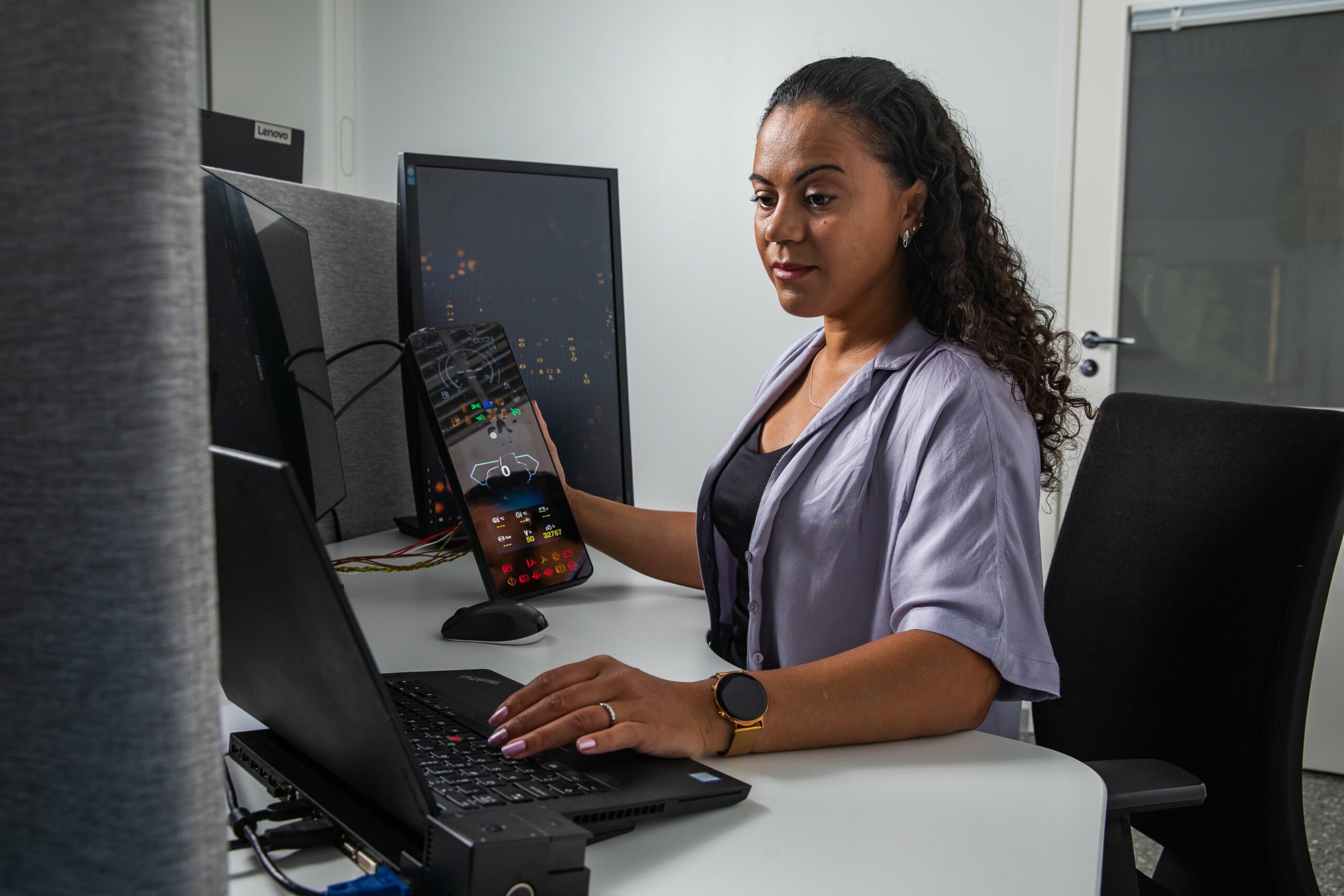Kalmar is a Global company providing cargo handling solutions and services to ports, terminals, distribution centres and heavy industry. Cargo handling and the container handling process is getting more and more automated. Looking at container terminal yards such as Hamburg or Rotterdam, it is clear that the automation of certain processes has already started.
The Gofore team consisting of Jonna Iljin, Joel Bergström and Christopher Klose participated in the Kalmar CoCreate workshop at the Terminal Operations Conference Europe in June 2018. During this conference within just 2 days, a new service idea was created. In this blog post, I will talk about what happened during this trip, what we did on the conference itself and what steps we have taken to reach our goal. This will give you a brief outlook on how you can enrich the creation of new services and how to look beyond the “obvious”.
The so-called Automated Guided Vehicles (AGV’s) are just one example of automated machinery which is already getting tasks via navigation computers. AGV’s coordinate routes to ensure that vehicles don´t collide with each other on the yard. These AGV´s are driving within a predetermined zone which is fenced and restricted for humans to enter. This means that as long as a human doesn´t enter the designated zone, the container handling process will continue smoothly. However, as soon as a human enters the fenced area all machinery has to stop to ensure safety. This raises the safety level for maintenance workers if they have to work on a vehicle that has broken down, but nevertheless, accidents do happen and then the whole process has to stop.
KALMAR CoCreate
The Gofore team were given the task to find solutions using the title, “how to create secure working environments for people in the fully automated terminal yard”. Kalmar wanted to generate ideas and find solutions.
We were able to discuss and learn about the differences between manually operated and automated container terminals from container terminal managers, from our Kamar mentors, and from other stakeholders in the container supply chain. We also learnt about deep-sea terminals and how they differ to short-sea terminals in terms of their processes, security and safety measures.
Arrival in Rotterdam and Team Dinner at Restaurant Thoms
This was the first time for me in the Netherlands and it was clear right from the beginning that Rotterdam is different to other cities I have visited. The city centre of Rotterdam has an unusual architecture which draws attention to it and you start wondering if people actually live in these buildings. Also unexpected to me were the cyclists. I mean, the Netherlands and the Dutch are known for cycling a lot, but having separate cycle roads alongside ‘normal roads’ is something which you don´t see too often in other countries. But even more fascinating to me was that no cyclist was wearing a helmet, which made me think “is it safer to wear a helmet or to build separate cycle roads?”
In the evening we had our first official meeting at Thoms, a restaurant close to the city centre of Rotterdam. There we first met the organizers from Kalmar, the other two teams participating in the Co-Creation, and our mentors from Kalmar who supported us during these days. Our mentors also helped with many insights and helped us find people who could give us more information from different perspectives. Mingling with all these people and getting an idea of what Co-Creation means to Kalmar, it was clear that we were all excited about the end results which would be presented on Wednesday to the TOC audience.
After getting to know each other during the aperitif, we continued with a long and copious dinner. Salad, carpaccio and muscles came as starters and it already felt as if this would be the main dish, but we continued with wonderful tasting steak and gilthead. It tasted amazing. While eating we were able to share many stories and have discussions about stereotypes from different countries and if they are true or not. It already felt as if had been acquainted for more than just an evening and it got pretty late. But all evenings have to end at some point, so we got a Dutch dessert called ‘warme brood pudding’ and had some rest before the real work started.
Beginning the journey
At 9 o´clock we had the first meeting of the day at the Co-Creation booth to go through upcoming events and the time we would have for ideating and preparing our pitch.
We even got amazing hoodies for the event! After that, we were able to prepare our material and get ready to dig into a new area which we haven´t known before.

But how did we start in this unknown area?
We knew we didn´t have much time so it was important to understand the whole container handling process quickly. Therefore we interviewed our mentors, terminal managers and other visitors to TOC Europe in the morning. We soaked up all the information and wrote as much as possible down on post-it notes.

I need to say this – it was a mess! So many insights, so many new terms and so many risks. After several hours of questioning and trying to understand what was happening, we needed a break. By now it was time for lunch, and breaks are always good if you have something to eat.
After lunch, it was time to structure all our information. We summarised our insights and with these insights written down, we were able to find bottlenecks and map these to the container handling process.
In the afternoon we had to start ideating what kind of approaches would be reasonable? What might be the right way? Which constraints would we face?
To not drift too far away with our ideas and visions, we constantly explained our ideas to our mentors and to terminal managers. This helped us to narrow down the options and look into the near future rather than a period 50 years from now.
After rushing through the day, the finishing time came quicker than expected and with it the feeling that a break to settle down all our thoughts was necessary.
We spent a relaxing evening in Rotterdam collecting our thoughts and running through our ideas, we knew that the next day would be tough!
Decision Day
Continuing where we ended the day before, final tweaks were made to our presentation in the morning and final interviews and discussions were completed to ensure our idea was correct. We prepared our pitch and started to align our speeches to form one cohesive proposal, and I have to say, Deadpool would have been proud of the growing hand in our speech.

Even though we only had a couple of minutes per team for our pitch, it was a nice experience and seeing so many people interested in our outcome gave us even more certainty that this was a great success. Many visitors and Kalmar members attended the final pitch and appeared to be deeply interested in our ideas.
To conclude the Co-Creation session, we were invited by Kalmar to their TOC after-party which was a blast. A great location, fantastic food and music and many more people who we were able to discuss our ideas and relax with.

There is only one thing left to say, a big thank you to all the Kalmar people who made this possible. It was an amazing experience, even though exhausting. Seeing so many people interested in thinking outside the box made it clear that there is still a lot of work to do. We are excited at the prospect of taking our ideas forward and helping shape the future with Kalmar – stay tuned for more blog posts!
Additionally, we have to say thanks to the great photography team who made not only beautiful pictures but also made a great video as well. Have a look here: TOC video



